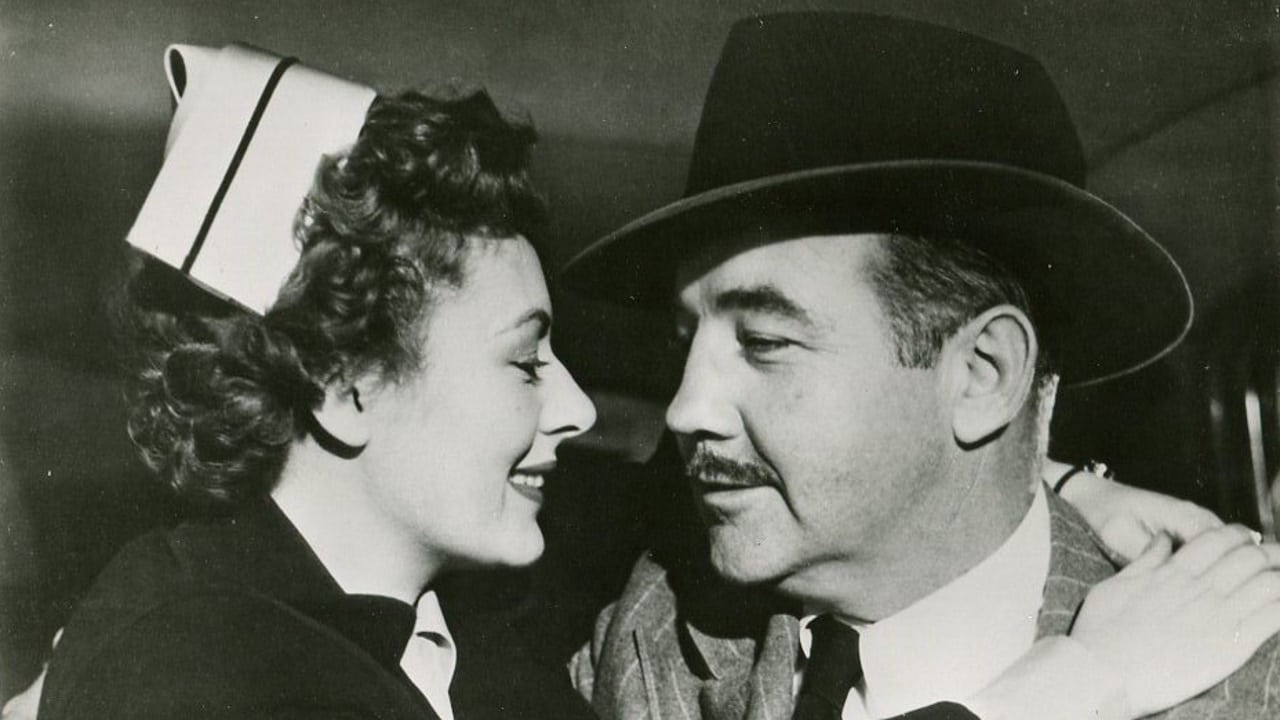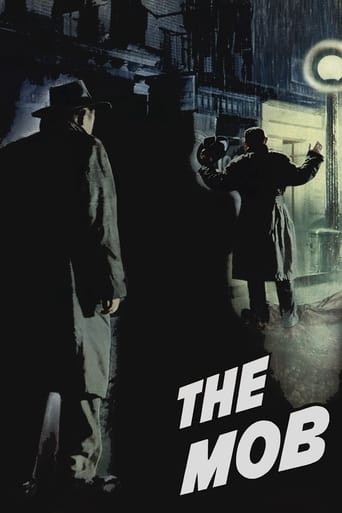

THE MOB is a fine little slice of film noir which stars Broderick Crawford in the best performance I've seen him give. He plays a cop who goes undercover as a dock worker to bring down a crime boss, uncovering murder and corruption along the way. Shades of ON THE WATERFRONT in the setting and photography, although this film predates that one. It's an enlivened little picture thanks to a cracking script full of great tough-guy dialogue and the like, and when you get a cast to make it work, it really works. Look out for a youthful Ernest Borgnine as a baddie and Neville Brand in his usual heavy performance. Despite his size, Crawford delivers an energetic turn and holds his own with the best of them, making this film above average for the genre.
... View MoreOff duty police detective Johnny Damico (Broderick Crawford) lets a killer slip through his hands after witnessing a mob hit. Damico is given a chance to redeem himself by going undercover to break up a waterfront crime racket and find the kingpin that ordered the hit. Damico under the assumed identity of small time New Orleans hoodlum Johnny Flynn, infiltrates the docks to find the 'big guy' known only as Blackie Clegg. Along the way Damico comes across an assortment of characters played by, at the time, relatively unknown actors like Ernest Borgnine, Neville Brand, Richard Kiley, and John Marley. Look for Charles Bronson in one of his earliest screen appearances in an uncredited role as a dock hand.Director Robert Parrish works what might have been routine police procedural crime drama into an edge of the seat mystery. A lot of the credit has to be given to writer William Bowers who Parrish teamed up with on his previous movie Cry Danger starring Dick Powell. Both enjoy a fast paced script with tongue in cheek banter, hinting of the same style that Bowers would use almost twenty years later when he wrote the script for Support Your Local Sheriff! While an actor like Powell would seem better suited for this type role, Crawford just off an Oscar win for All the Kings Men two years before, comes off surprisingly natural as a wise cracking undercover cop. The Mob though listed as film noir really isn't noir in the classic sense though it does have some of the elements. The Mob is an enjoyable 1950's style mystery crime drama. The run time of 87 minutes breezes by and keeps you guessing. Fans of the genre will enjoy this one.
... View MoreBroderick Crawford plays a cop who goes undercover to infiltrate the mob. And to make them think he's "their kind of guy" he comes into town with a major attitude and a willingness to slug anyone who gets in his way. However, this is no routine assignment, as there are lots of dangerous twists and turns and repeatedly it appears he's about to buy the farm. I particularly loved the very tense and rather violent ending in the hospital---you just have to see it to understand.This film has one of the most important ingredients of Film Noir down pat--it has one of the ugliest casts in film history!! True lovers of this gritty genre know that actors in such films can't be "pretty boys" but ugly and cold-blooded killers. That's why when I saw this film starred Broderick Crawford (king of the hard-drinking ugly actors), Ernest Borgnine and Neville Brand (the scariest looking thug in film history) I was thrilled to see it. Now this ISN'T meant as an insult--I am just stating a fact necessary for a good Noir film. Great Noir abounds with ugly mugs like Edmund O'Brien, John Ireland and John McGraw--though the cast in THE MOB is among the ugliest and therefore best in genre history. In addition to ugly and menacing men, the film also features realistic and gritty violence, tough dialog, lots of great shadows and camera angles as well as a taut script--and all are in THE MOB in spades. All the elements needed for exceptional Noir--so it certainly wasn't a surprise that I really enjoyed the film.If you love Noir, you will love this film. If you don't, then watch this film anyways!! Then, try some other great Noir films like THE KILLERS, DOA, KISS OF DEATH and ASPHALT JUNGLE--then you, too, will most likely be hooked!!
... View MoreBroderick Crawford plays a cop in this excellent crime drama. (I wouldn't call it a film noir but I'd say it got to the location of "On the Waterfront" first. And, in my very humble opinion, pulled together a better story.) The dialogue has a snappy edge that isn't found much in gangster movies of this period. The guys -- and it's mostly all guys here -- have a sarcastic way of communicating. They talk like athletes or construction workers. I've been both and I know. A lot of calling each other cheerleaders and other ways of joking about their masculinity. But it's done in a good-natured, blue collar. There is no hint of anti-gay sentiment.Broderick Crawford generally seems so different from his mother it's hard to imagine they were related in that way. But here we pick up his casually comic timing.Crawford is excellent as a policeman who goes undercover on the docks. Richard Kiley shines as one of the guys -- giving nothing away, here -- he deals with. And Matt Crowley is fine as another. (I checked on him and he played Walter Burns in a TV version of "The Front Page in 1945. Wow! I didn't know there WAS TV in 1945.) The actress playing Crawford's girlfriend isn't bad. She plays a nurse and she seems wholesome. Wholesome and dull. She seems to have few film credits.This has an authentic feel. And it's different, too. It's definitely a keeper.
... View More